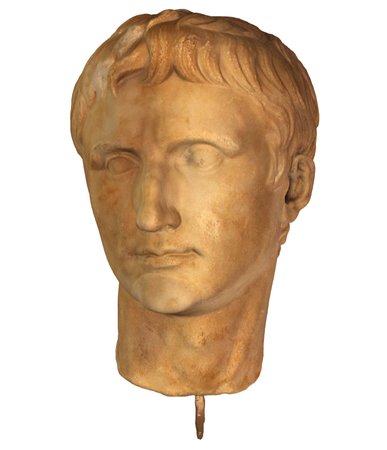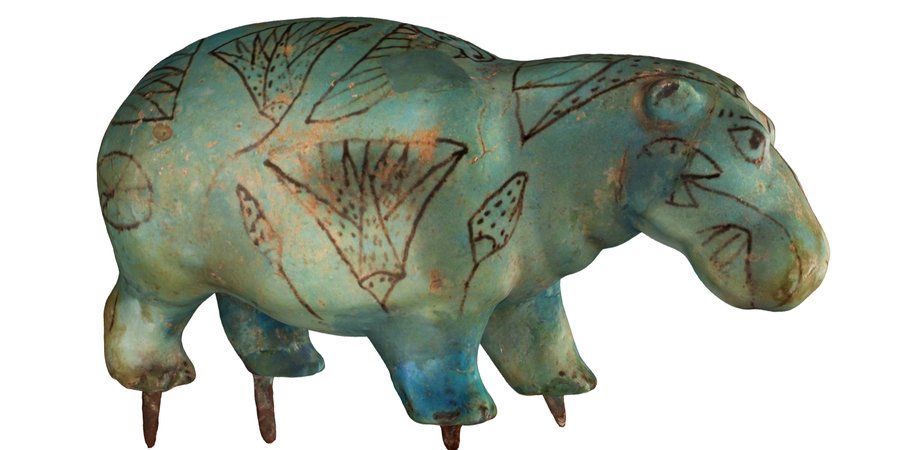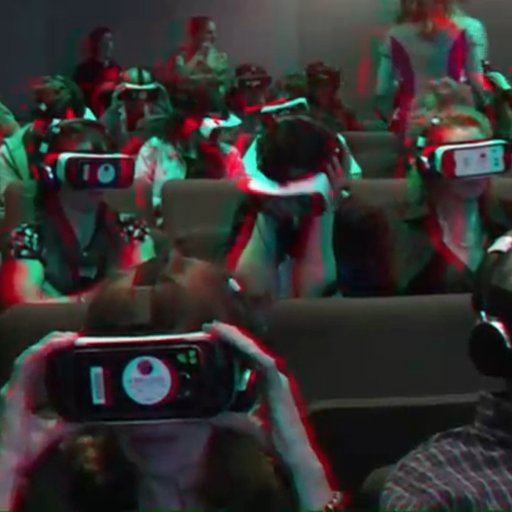While galleries and museums around the world scramble to document and digitize their collections, employing divergent tactics of retaining or releasing ownership of the images, Google has quietly revolutionized the web-based art experience through its Google Art Project , launched in 2011. Notable for bringing for bringing Street View capabilities to museums including MoMA and Tate Modern as well as world heritage sites like the Pyramids of Giza, the Project’s latest addition is a collection of 303 3-D digital models from the collections of six international museums.
 Emperor Augustus (c. 1-25 CE), from the collection of Kunsthistoriches Museum Wein
Emperor Augustus (c. 1-25 CE), from the collection of Kunsthistoriches Museum Wein
Made using state-of-the art 3-D scanning technology, each model is fully mapped to be viewable from all sides, with notes from archeologists and curators still visible. The collection, which comes from institutions including LACMA and the Museo d’Arte Orientale in Rome, features mainly ancient and antique artifacts, the most recent being Itzhak Danziger ’s Nimrod (1939) from the Israel Museum in Jerusalem and pictured below.
 Detail of
Nimrod
(1939) by Itzhak Danziger, from the collection of the Israel Museum
Detail of
Nimrod
(1939) by Itzhak Danziger, from the collection of the Israel Museum
Other remarkable pieces include a 4,000 year old hippopotamus figure from Egypt’s Middle Kingdom (from the Kunsthistorisches Museum Wien in Vienna; see above for image), a Moche stirrup-spout ceramic vessel with deer hunting scenes from around 500 CE (from the Dallas Museum of Art ), and the terrifying Ṣaḍbhuja Jñāna Mahākāla, an 18th century Tibetan sculpture in bronze, pigments, and vitreous pearls (from the Museo d’rte Orientale ).
 Stirrup-Spout Vessel with Deer Hunting Scenes (c. 450-550 CE), from the collection of the Dallas Museum of Art
Stirrup-Spout Vessel with Deer Hunting Scenes (c. 450-550 CE), from the collection of the Dallas Museum of Art
 Sadbhuja Jnana Mahakala (18th century CE), from the collection of the Museo d'Arte Orientale
Sadbhuja Jnana Mahakala (18th century CE), from the collection of the Museo d'Arte Orientale
By far the biggest contributor to the collection is the California Academy of Sciences , whose various vertebrate skulls account for 242 of the 303 digital models. Covering everything from eels to elephants, the skulls are just as fascinating as the man-made artifacts, and in some cases equally indicative of our effort to shape the world around us in service of aesthetic ideals—compare the skull of an English bulldog to that of a labrador retriever to see just how far our reach extends.
 Two breeds of
Canis familiaris
or domestic dog (English bulldog below, Labrador retriever above); both from the collection of the California Academy of Sciences
Two breeds of
Canis familiaris
or domestic dog (English bulldog below, Labrador retriever above); both from the collection of the California Academy of Sciences

Other notable mentions in the skull category include the pig-like babirusa (that set of “horns” on its snout are actually teeth that grow up through the roof of its mouth) and the helmeted hornbill, whose distinctive headgear is made of solid keratin and is used in aerial head-butting matches for dominance.
 Babyrousa babyrussa
(buru babirusa), from the collection of the California Academy of Sciences
Babyrousa babyrussa
(buru babirusa), from the collection of the California Academy of Sciences
 Rhinoplax vigil
(helmeted hornbill), from the collection of the California Academy of Sciences
Rhinoplax vigil
(helmeted hornbill), from the collection of the California Academy of Sciences
Unlike many other attempts to digitize art objects using 3-D modeling, the Google Art Project has produced detailed, high-definition textures and a silky-smooth interface. Though currently unavailable for download, this is closer than most of us will (legally) get to being able to handle and explore these precious pieces of human and natural history. Keep scrolling to see more examples from the collection, and click here to see them all in full 3-D.
 Stirrup-Spout Vessel: Seated Figure (c. 350-550 CE), from the collection of the Dallas Museum of Art
Stirrup-Spout Vessel: Seated Figure (c. 350-550 CE), from the collection of the Dallas Museum of Art
 Ushabti of Sen-nedjem (c. 1320-1250 BCE), from the collection of the Kunsthistorisches Museum Wein
Ushabti of Sen-nedjem (c. 1320-1250 BCE), from the collection of the Kunsthistorisches Museum Wein
 Chelonia mydas
(green sea turtle), from the collection of the California Academy of Sciences
Chelonia mydas
(green sea turtle), from the collection of the California Academy of Sciences
 Etrog (citron) box, (1908-1929), from the collection of the Israel Museum
Etrog (citron) box, (1908-1929), from the collection of the Israel Museum
 Horse and horseman (2nd Century BCE), from the collection of the Museo d'Arte Orientale
Horse and horseman (2nd Century BCE), from the collection of the Museo d'Arte Orientale
























